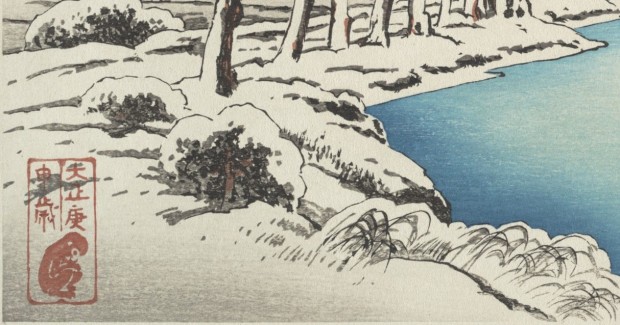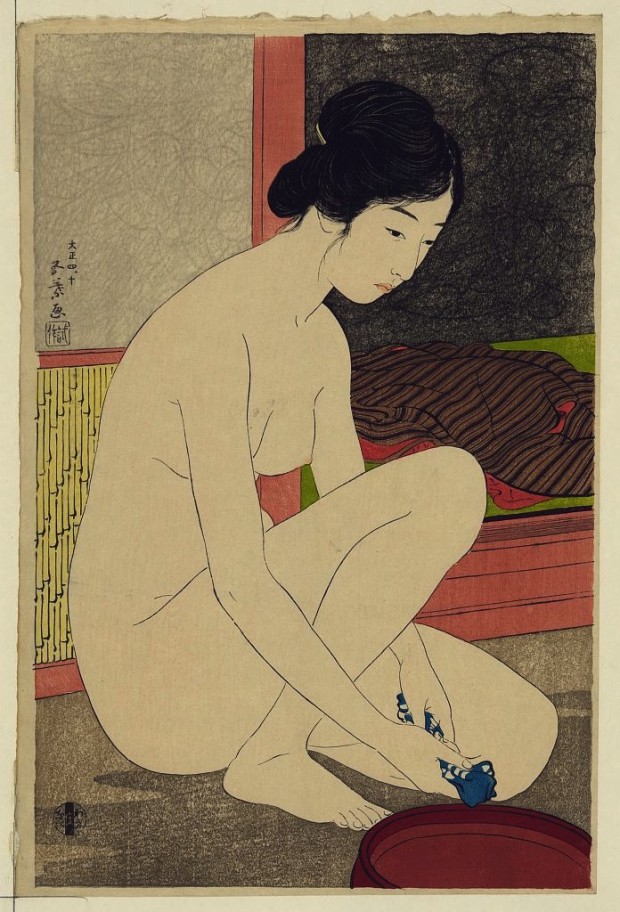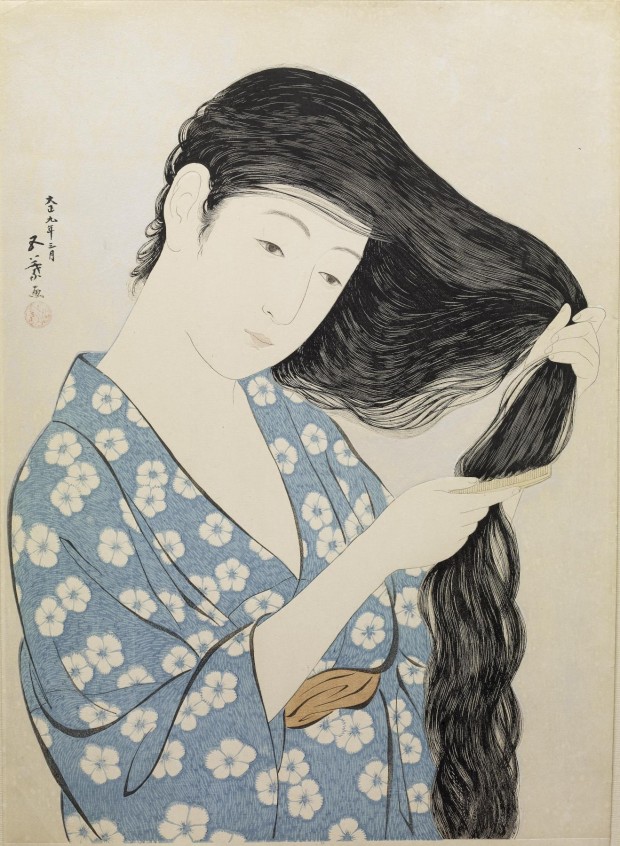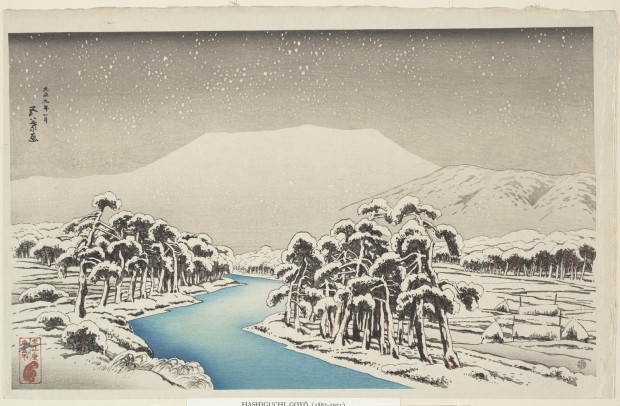An iconographic and text archive related to communication, technology and art.
☛ The Metropolitan Museum of Art: “Ibuki Mountain in Snow” by Hashiguchi Goyō (1880–1921), polychrome woodblock print, ink and color on paper, 9 x 15 1/2 in. (22.9 x 39.4 cm), 1920 (Taishō period: 1912–26). The Howard Mansfield Collection, Purchase, Rogers Fund, 1936. See full screen.

Hanga.com offers a concise but detailed overview of Hashiguchi Goyō life and artistic importance:
Hashiguchi Goyo is one of the most celebrated shin hanga artists, particularly renowned for his woodblock prints of beautiful women, also known as bijin-ga [also spelled bijinga]. The design and carving of Goyo’s prints is technically masterful, and they were lavishly printed, often with pearlescent mica backgrounds. Goyo’s production standards were so high that only woodblock prints of superior quality were allowed to be sold and distributed. Although Goyo died in his artistic prime, having produced only a small number of woodblock prints, his work is regarded by many to be among the finest bijin-ga of the twentieth century. (read more)
Below are two well known bijinga prints created by Hashiguchi Goyō. The first one is available online at the Library of Congress (LC-DIG-jpd-02706). “Yokugo no onna” (“Woman after a bath”) was created or published in 1915. It shows a nude woman, seated, facing right, after her bath.

The second one was retrieved from The British Museum (also available from Wikimedia Common). It’s titled “Kamisuki (Combing the hair)” and is from 1920. Here’s how the Museum introduces this print:
As a craftsman, Goyō was a perfectionist. Following the practices of the new Sōsaku Hanga (‘Creative Print’) movement, he performed every part of the process of print production himself. In particular, as in this print, he revived the traditional Ukiyo-e tradition of the fine cutting of the black blocks to represent the intricacies of women’s hair. The combing of the hair, part of a Japanese woman’s very private toilette routine – in public the hair would only be seen swept up in a triple bun – was another of Utamaro’s favourite subjects. To further focus the viewer’s attention on the hair, Goyō depicts the girl in a simple bath-robe of soft blue against a silvery mica background.

To learn more about Hashiguchi Goyō, one can also read the short essay “Hashiguchi Goyô (1880-1921) ‘Modernizing Utamaro’” (hosted by Viewing Japanese Print). A simple query using John Resig search tool for Japanese woodblock prints allows to discover many prints by Hashiguchi Goyō: see here.
• • •
Previously:
- By Philippe Theophanidis
- on
- ― Published in Art, Illustration, Woodcut
- Tagged: bijinga, Hashiguchi Goyō, Japan, shin-hanga, snow, ukiyo-e, winter, woman, woodblock printing

